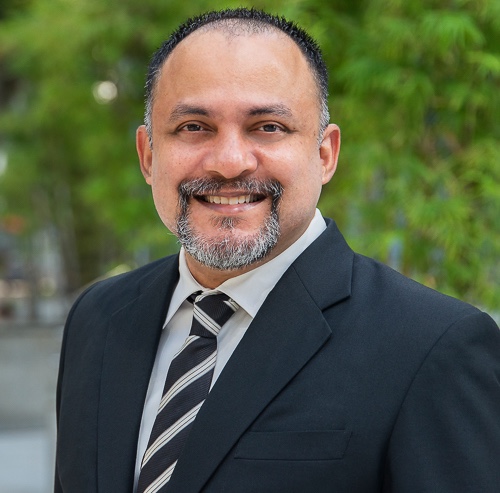Article
The Cordlife saga – 3 questions affected families should ask | Singapore
23 April 2024 | Applicable law: Singapore | 8 minute read
In 2023, thousands of cord blood units stored at Singapore-listed cord blood bank Cordlife were found to have been damaged. The situation is still developing, with new information indicating that the issue may be more serious than initially thought.
Following from the initial discovery in November 2023 that an estimated 2,200 cord blood units belonging to approximately 2,150 clients in one of Cordlife's affected storage tanks were exposed to temperatures beyond what was acceptable, it was discovered in April 2024 that another 5,300 cord blood units in a second tank was also considered non-viable. This could potentially affect thousands of families, though further details are still emerging.
Withers has been approached by several families in this crisis.
We highlight three key questions affected families should consider.
What is at stake?
It is clear that what is at stake goes beyond the simple question of a refund of fees. Families have legitimate concerns over the loss of something irreplaceable – cord blood collected at childbirth for the express purpose of protecting the lives of those children or family members, with many possible applications to be developed in the future. For the affected families and individuals, this raises complex issues, particularly if stem cell treatments have or will be developed for diseases that they suffer from. Preserving that posibility was Cordlife's promise.
Cordlife refers to haematopoietic stem cells as "life-saving"[1] cells, capable of helping people "live healthier, happier, and longer"[2] with "the ability to differentiate into other cell types found in blood, such as red blood cells, white blood cells and platelets …[and] play an important role in regenerating damaged or diseased cells, correcting genetic defects, and treating blood cancers". Cordlife further explains that "cord blood can be used to treat over 80 diseases, such as leukaemia, lymphoma, thalassemia as well as immune disorders and metabolic disorders, just to name a few". Other companies have highlighted that the babies of this age could be the "first generation to live beyond 100" and that "your baby's umbilical cord is possibly the richest available source of stem cells they will ever have… In the future, they could be used to repair your baby’s damaged tissue, regenerate old organs or even replace body parts."[3]
The loss of stem cells could therefore have a serious impact on a child's health outcomes if such a treatment becomes available and necessary. Such haematopoietic stem cells associated with a child would be a perfect biological match and may potentially replace almost any other cell in the human body.
What went wrong and who is to blame?
As Cordlife has, on 17 April 2024, lodged a police report alleging wrongdoing by former employees, affected families would want to watch very closely developments in any upcoming criminal proceedings. It is expected that Cordlife may, in a defence to any claims made against it, seek to disclaim corporate responsibility on the basis that particular individuals should instead be blamed.
Cordlife's police report follows on from investigations conducted by a Committee of Inquiry, which reportedly has uncovered "preliminary evidence" of potential wrongdoing by former employees. Amidst this news, a notice has been lodged to convene an extraordinary general meeting seeking to remove the acting chairman and three independent directors. Amidst the finger pointing, it remains to be seen where the blame should properly be laid.
On the other hand, the Singapore Ministry of Health's findings are that there were lapses that preceded the public complaints in respect of the following:
- Cordlife's temperature monitoring system failed to send notifications of the temperature excursions in two tanks to CGL’s personnel between February and June 2022.
- Cordlife's six-monthly preventative maintenance was not carried out for two tanks in 2022.
- Cordlife implemented a new cord blood processing method in August 2023, which was not properly validated according to approved plan and protocol.
This raises many questions: Who designed the monitoring system? Why was there not an inbuilt backup failsafe in the system such that alerts would be sent out if the main monitoring system was not working? Were there processes in place to supervise the routine running of the monitoring system, and what were the systems in place to ensure compliance of such processes? Who was responsible for maintaining the system and how was maintenance carried out if at all? What caused the monitoring system to fail and how was the failure detected and rectified?
Cordlife has a public explanation that "[t]he temperature excursions in the High-Risk Tanks were also primarily due to shortcomings in the way temperature checks were conducted, monitored and escalated, causing delays in replenishing liquid nitrogen to regulate tank temperatures". This response suggests that there were other reasons at play, and raises a further question as to the quality of the analysis that led to the conclusion that a particular cause was the primary one.
How complex is the valuation exercise?
If damages beyond the fees paid are in fact available, the approach to valuation methodologies will have to be carefully considered. This matter raises complex considerations.
One may argue at first instance that cord blood is not that valuable because it would likely be quite rare that a child would need to use it. There are statistics which demonstrate that cord blood is not commonly used. Bloomberg reports that a study found only one in 400 children to one in 200,000 children with stored cord blood would be able to use it throughout their lifetime.[4] The Singapore Ministry of Health in a November 2023 report stated that "So far, the utilisation of privately banked cord blood has been low. Since Cordlife started its services in 2001, seven CBUs (cord blood units) have been retrieved for treatment purposes. Similar usage incidence is observed in the other private cord blood banks in Singapore".
At the same time, there is an obvious and viable alternative in adult stem cells even if cord stem cells are irreplaceable. However, adult stem cells carry the risk of being impaired by toxins, changes in DNA and more, and come with the challenge of host diseases and the need to find a match.
However, further consideration suggests that this analysis may not be complete. A key reason for the low utilisation so far could be that the attendant technology is still relatively new. The opportunities that cord stem cells can bring to further human health, well-being and mortality are still being explored. Cordlife itself expressly recognises the growing potential for cord blood, "Clinical trials are also underway to use cord blood to treat Autism, Cerebral Palsy and conditions which occur in the later stages of life, such as Alzheimer’s Disease, Parkinson’s, Osteoarthritis and many more. Clinical trials are instrumental in enabling medical breakthroughs and give hope to those with medical conditions that currently have no known cure".
Indeed, from cell re-generation, curing cancer, organ transplant, treatment of neurological issues and more, the potential for stem cells are endless (and is in fact a core aspect of the futuristic transhumanism movement). There are studies which opine that in the near future, one in every three persons will require regenerative therapy.[5]
Ironically, one cannot rule out the possibility that advancements in bio-technology could make cord blood less useful, where a lot more could be achieved with advanced technology using adult stem cells instead. The future of cord blood nevertheless seems bright, as the substantial funds raised by Cordlife indicates significant public confidence in long-term viability of developing technologies relating to cord blood.
At what recourse?
Ideally, families would want to have recourse that would be internationally enforceable. Cordlife is effectively a global business, with operations across various countries.
Conclusion
Withers will be conducting a townhall for affected families in early May 2024. Please reach out to lead partner Shashi Nathan at Shashi.nathan@withersworldwide.com if you would like to attend the townhall and/or where there are any queries on this article.
This article does not constitute legal advice and shall not be relied upon as such.
[1] https://www.cordlife.com/sg/life-changing-decision#:~:text=Your%20child's%20umbilical%20cord%20blood%20is%20a%20100%25%20match%20for,(self%2Duse)%20treatments.
[2] https://www.cordlife.com/guiding-principles
[3] https://cells4life.com/cord-blood-banking-overview/
[4] https://www.bloomberg.com/news/articles/2024-04-21/cordlife-scandal-fury-as-thousands-of-stem-cell-samples-destroyed-in-singapore
[5] Harris, David T. “Cord Blood Stem Cells: A Review of Potential Neurological Applications” Stem Cell Review 2008 4:269–274 https://stemcelltreatmentnow.com/files/studies/Cord-Blood-Stem-Cells-A-Review-of-Potential-Neurological-Applications.pdf


